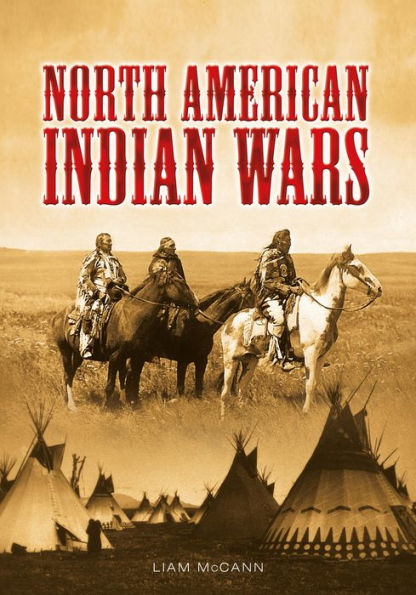North American Indian Wars
Now that we are re-assessing the devasting effect of aggressive and predatory European colonialism, particularly by Britain, this book provides a timely review of how the indigenous population of North America was virtually wiped out by the end of the 19th century. It's estimated that between two and ten million Native Americans farmed the plains in the northwest of the continent before the arrival of Columbus in the New World. Unfortunately, the aggressive, land grabbing Europeans brought all manner of infectious diseases across the Atlantic with them. Millions of Native Americans who weren't killed in conflict ended up dying from diseases like smallpox (to which they had no resistance) or were forced to flee their lands to Mexico and Canada. The American-Indian Wars were a series of conflicts between European settlers in North America and the indigenous people. They were mostly fought over resources, cattle and land, which the colonists believed they had a right to seize. As the number of Europeans increased, they expanded their territory north and west into lands that had belonged to the Indian people for centuries. By the middle of the 19th century the population of indigenous people had declined to little more than half a million. It would take until 1924 before peace between the settlers and the aboriginal people allowed their numbers to recover.
1137255768
North American Indian Wars
Now that we are re-assessing the devasting effect of aggressive and predatory European colonialism, particularly by Britain, this book provides a timely review of how the indigenous population of North America was virtually wiped out by the end of the 19th century. It's estimated that between two and ten million Native Americans farmed the plains in the northwest of the continent before the arrival of Columbus in the New World. Unfortunately, the aggressive, land grabbing Europeans brought all manner of infectious diseases across the Atlantic with them. Millions of Native Americans who weren't killed in conflict ended up dying from diseases like smallpox (to which they had no resistance) or were forced to flee their lands to Mexico and Canada. The American-Indian Wars were a series of conflicts between European settlers in North America and the indigenous people. They were mostly fought over resources, cattle and land, which the colonists believed they had a right to seize. As the number of Europeans increased, they expanded their territory north and west into lands that had belonged to the Indian people for centuries. By the middle of the 19th century the population of indigenous people had declined to little more than half a million. It would take until 1924 before peace between the settlers and the aboriginal people allowed their numbers to recover.
5.24
In Stock
5
1

North American Indian Wars
128
North American Indian Wars
128
5.24
In Stock

Product Details
| ISBN-13: | 9781782819318 |
|---|---|
| Publisher: | G2 Rights |
| Publication date: | 07/10/2020 |
| Sold by: | Bookwire |
| Format: | eBook |
| Pages: | 128 |
| File size: | 25 MB |
| Note: | This product may take a few minutes to download. |
From the B&N Reads Blog
